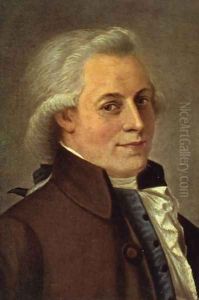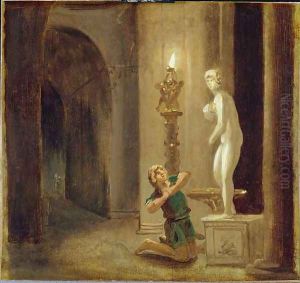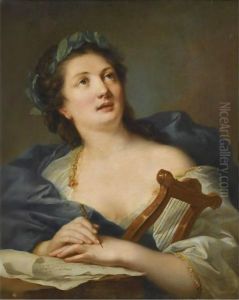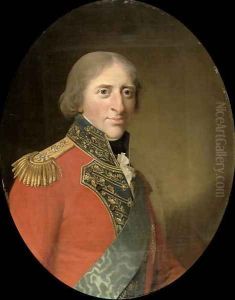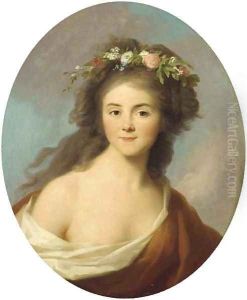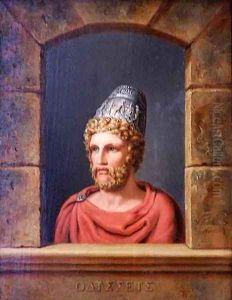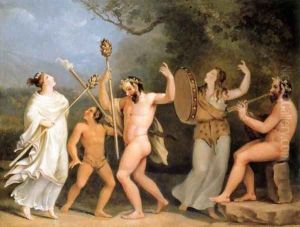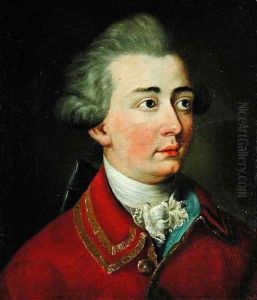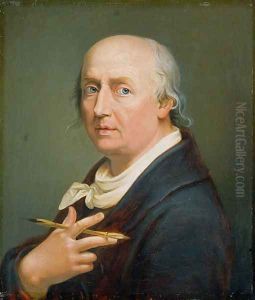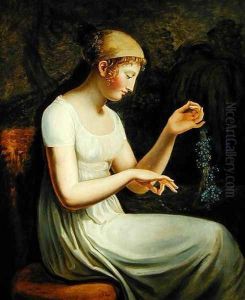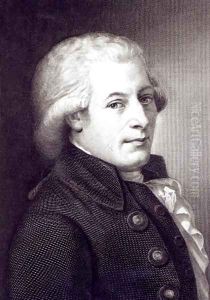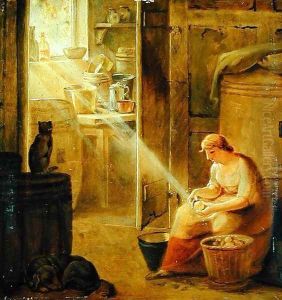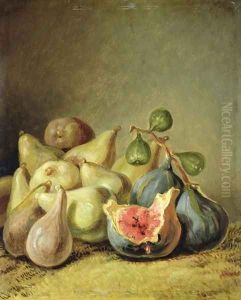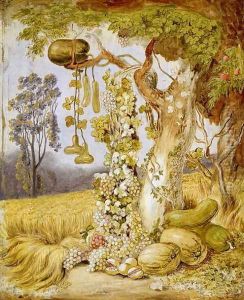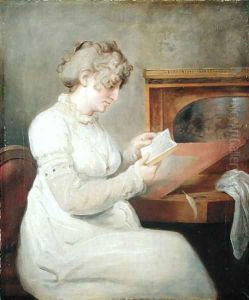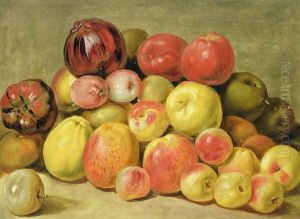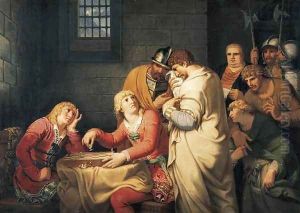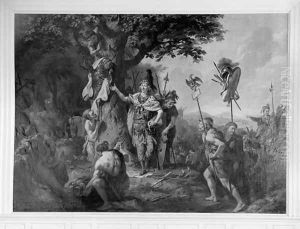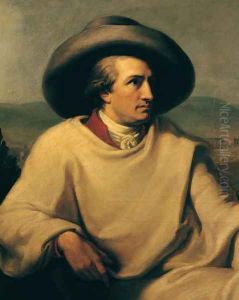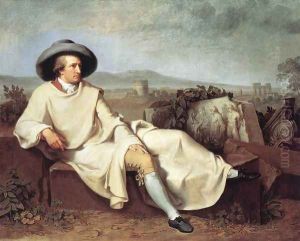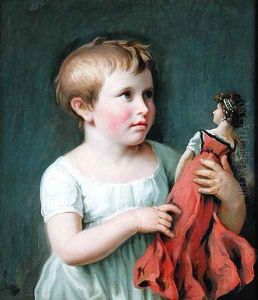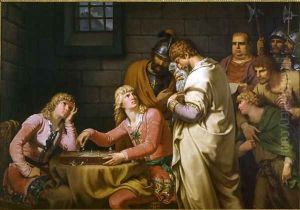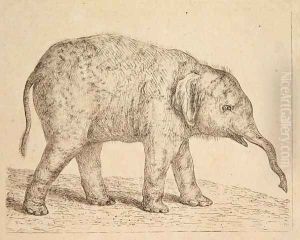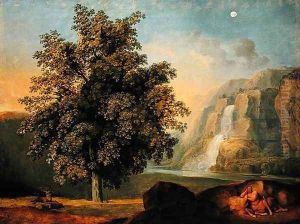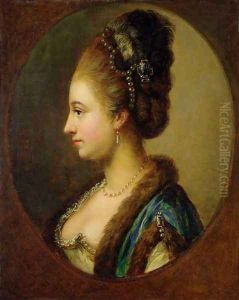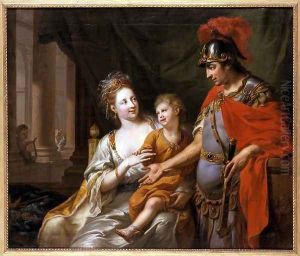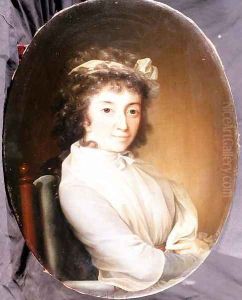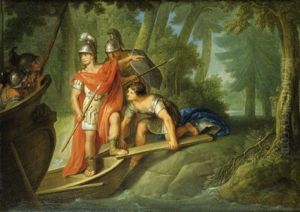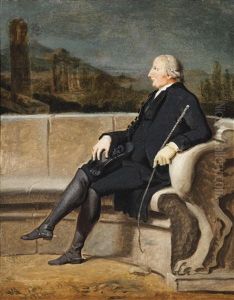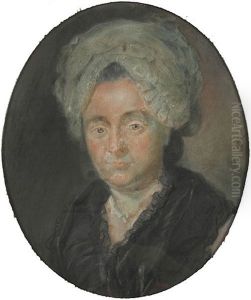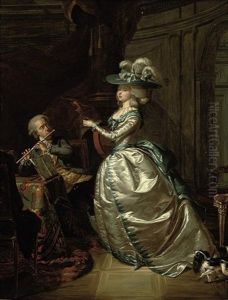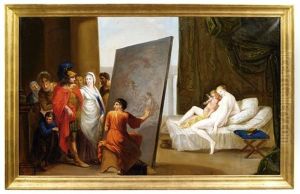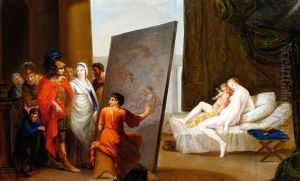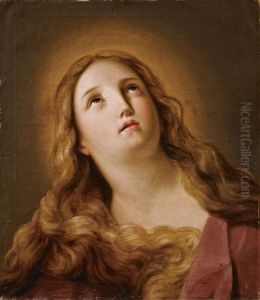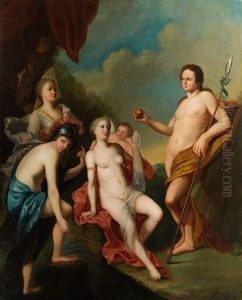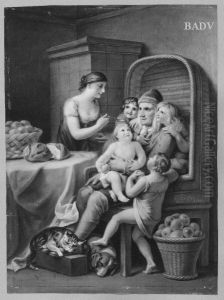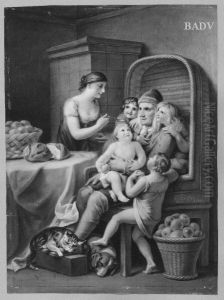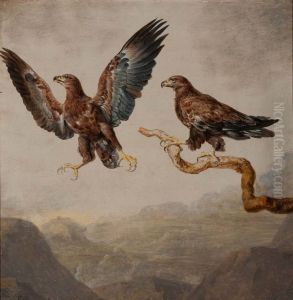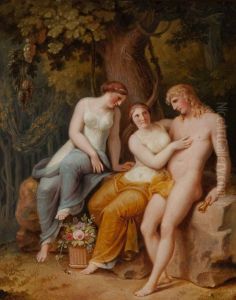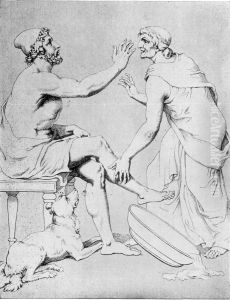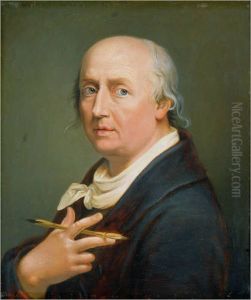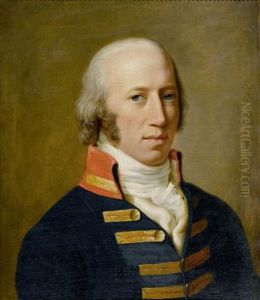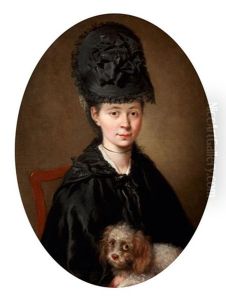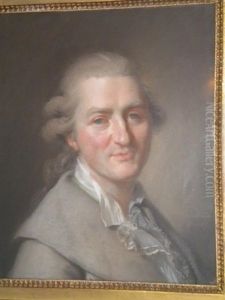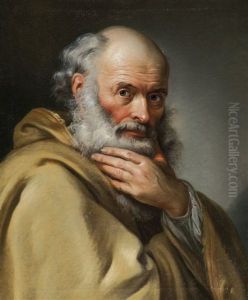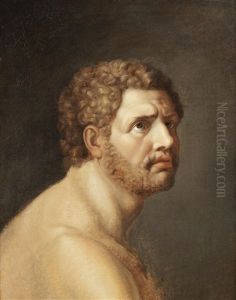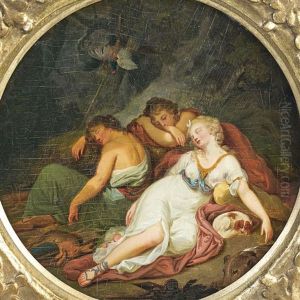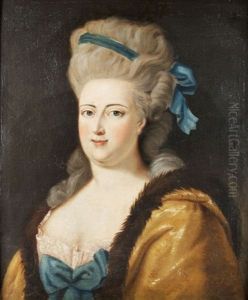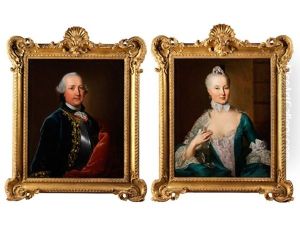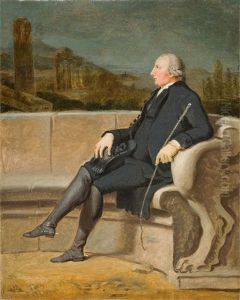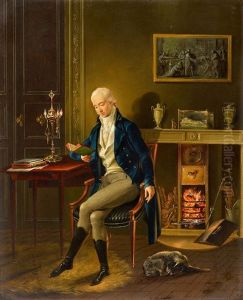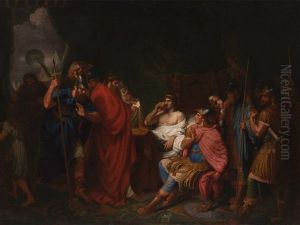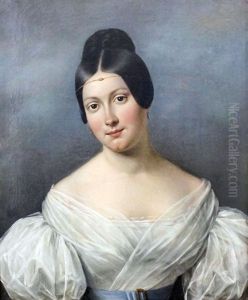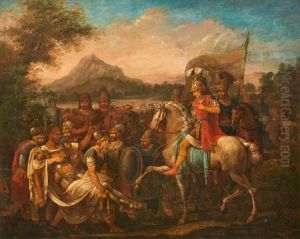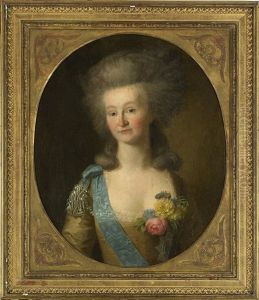Johann Heinrich Wilhelm Tischbein Paintings
Johann Heinrich Wilhelm Tischbein, commonly known as Goethe Tischbein, was a notable German painter from the 18th century, born on February 15, 1751, in Haina, Germany. He hailed from a family with a significant artistic heritage, being part of the Tischbein family of painters, which included several important artists of the time. Tischbein's early interest in art was nurtured within this creative family environment, leading him to pursue his passion for painting from a young age.
Tischbein's education in art began under the guidance of his uncle, Johann Jacob Tischbein, in Hamburg, and he further honed his skills in Kassel at the Academy of Art. His artistic journey led him to travel extensively across Europe, including significant periods in the Netherlands, Italy, and Germany, where he was exposed to the works of the Old Masters. These experiences greatly influenced his stylistic development, merging traditional techniques with his unique interpretations of subjects.
Perhaps the most iconic phase of his career came during his stay in Italy, particularly in Rome, where he became part of the vibrant community of German artists residing in the city. It was here that Tischbein formed a close friendship with the famous German writer Johann Wolfgang von Goethe, leading to his most renowned work, the portrait of Goethe in the Roman Campagna (1787), which epitomizes the ideals of Neoclassicism and has cemented Tischbein's place in art history. This period marked the pinnacle of Tischbein's artistic achievements, showcasing his mastery in portraiture and his ability to capture the intellectual spirit of his era.
Throughout his career, Tischbein was involved in academic circles and held several prestigious positions, including director of the art academy in Naples. Despite his success, his later years were marked by financial difficulties, and he returned to Germany, where he continued to work until his death on June 26, 1829, in Eutin, Germany. Tischbein's legacy is preserved through his vast body of work, which includes portraits, historical scenes, and landscapes, reflecting the cultural and artistic vibrancy of his time. His contributions to German art are celebrated for their elegance, historical significance, and the insight they provide into the European Enlightenment and Neoclassical movement.
